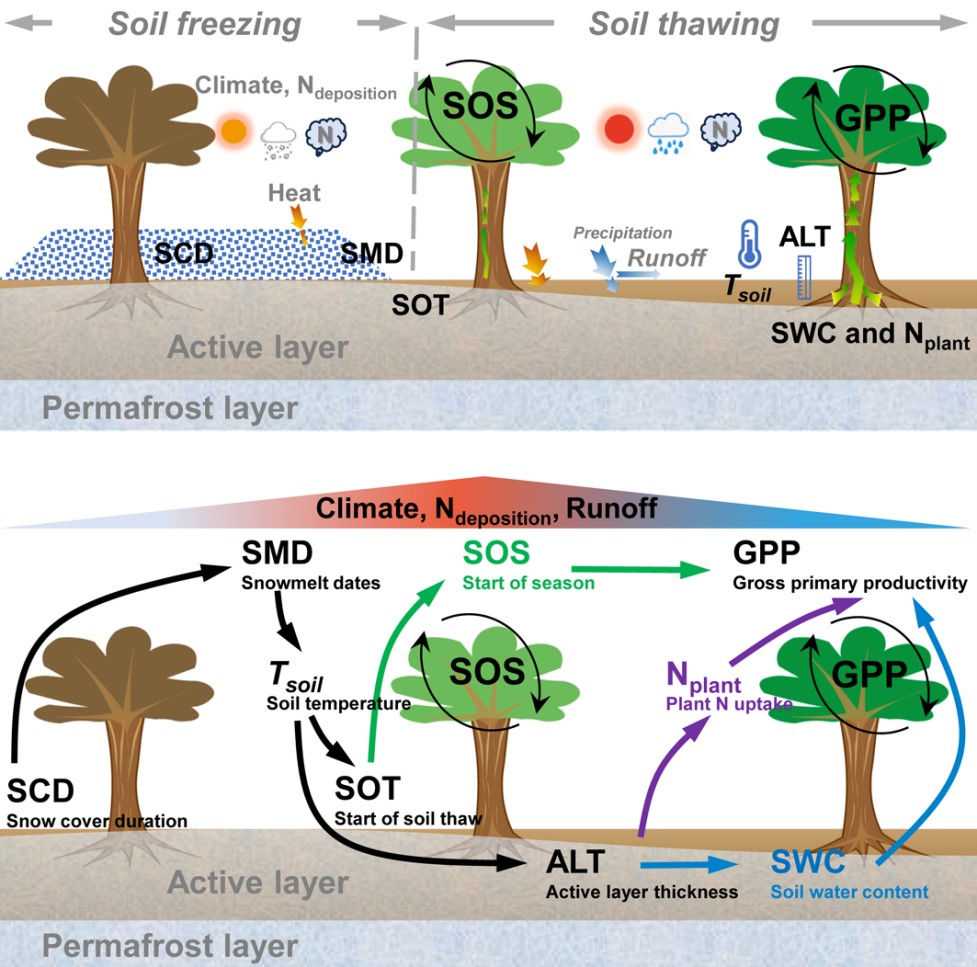Warming-Independent Snow Loss Accelerates Vegetation Greening Through Permafrost Thaw, Study Reveals
New research indicates that a warming-independent mechanism drives vegetation growth in northern Arctic permafrost regions. A study led by the Institute of Applied Ecology (IAE), Chinese Academy of Sciences, demonstrates that reduced snow cover duration, independent of temperature increases, enhances plant greenness by accelerating permafrost thaw. This process has implications for the global carbon cycle.
Permafrost regions function as significant carbon sinks, absorbing more atmospheric carbon dioxide than they release, which is important for climate change mitigation. However, warming has led to a decrease in snowpack duration in these areas. While prior studies have often linked vegetation growth to rising temperatures, this research identifies snow cover loss as a key factor in ecological change through three interconnected pathways (Figure 1).
Dr. CHEN Ning of IAE and an international team analyzed vegetation dynamics across Siberia, Alaska, and northern Canada using multi-source satellite data and field observations. Their analysis showed that shorter snow cover periods resulted in warmer soil temperatures earlier in the growing season. This led to earlier permafrost thaw and a deepening of the active layer thickness, the uppermost soil layer that thaws annually and is critical for plant growth and carbon exchange. The deeper thaw increased soil moisture and the availability of nutrients, particularly nitrogen, and accelerated spring vegetation green-up by up to 15 days in some areas. Notably, regions with historically colder soils experienced reduced plant productivity, indicating regional variations.
Snow acts as both a thermal blanket and a hydrological regulator. When it retreats earlier, soils absorb more spring sunlight, creating a self-reinforcing cycle of thaw. According to Dr. Chen, "This alters water distribution and microbial activity, effectively fertilizing ecosystems." The team quantified three mechanisms: earlier spring green-up (ie., start of season, SOS pathway), enhanced soil water content (SWC pathway), and increased nitrogen uptake by plants (N-uptake pathway).
Published in Communications Earth & Environment, the study provides important insights for climate models. The findings highlight the necessity of incorporating snow-cover dynamics into Arctic-Boreal climate projections, as current models primarily focus on temperature trends. With snow duration decreasing in northern latitudes, it is emphasize the need for policymakers to consider these complex and nonlinear feedbacks in mitigation strategies.

Figure 1. Schematic diagram showing how reduced snow cover accelerates permafrost thaw, altering soil conditions and vegetation growth through thermal, hydrological, and nutrient pathways (Image by CHEN Ning).



